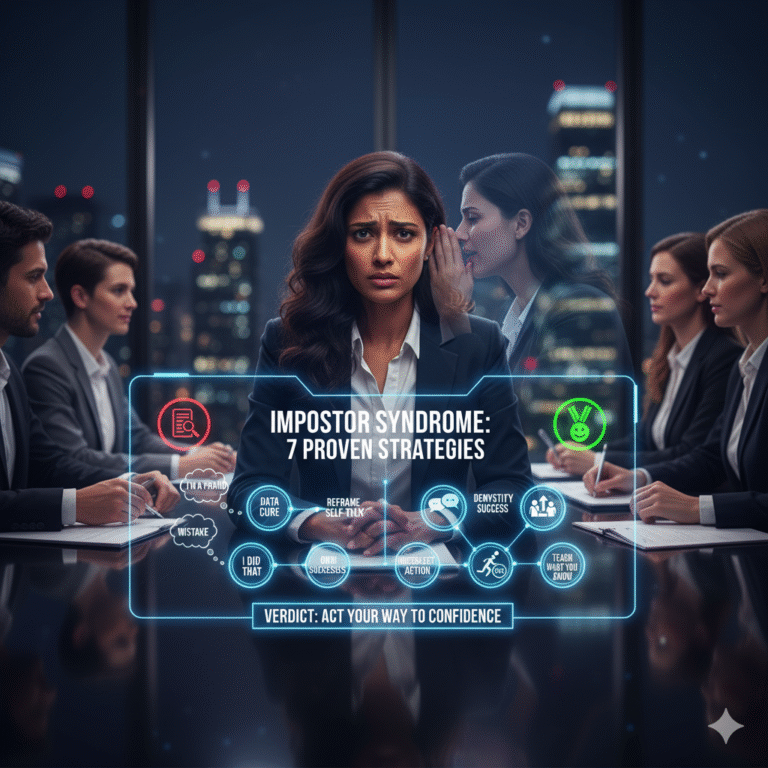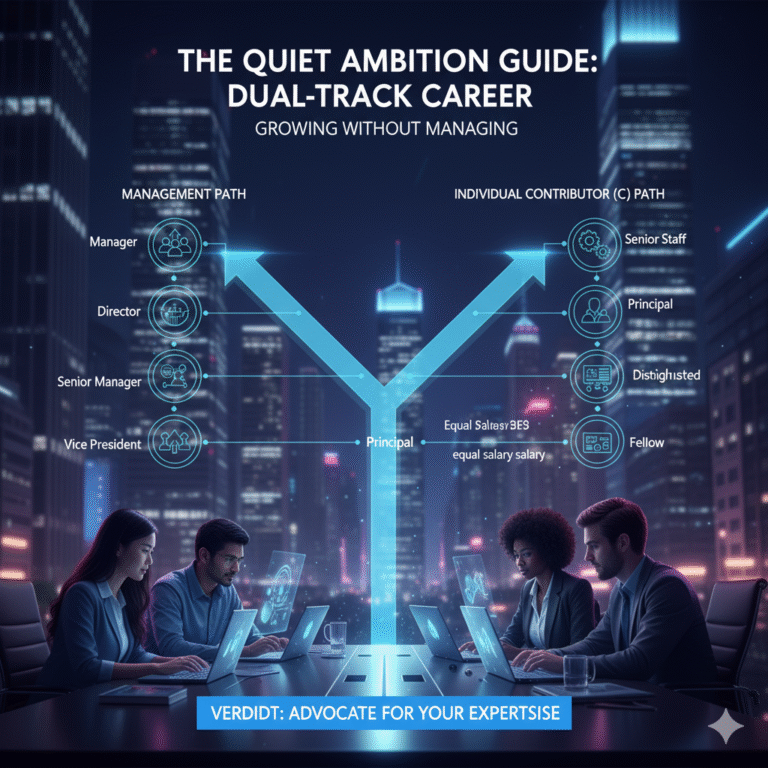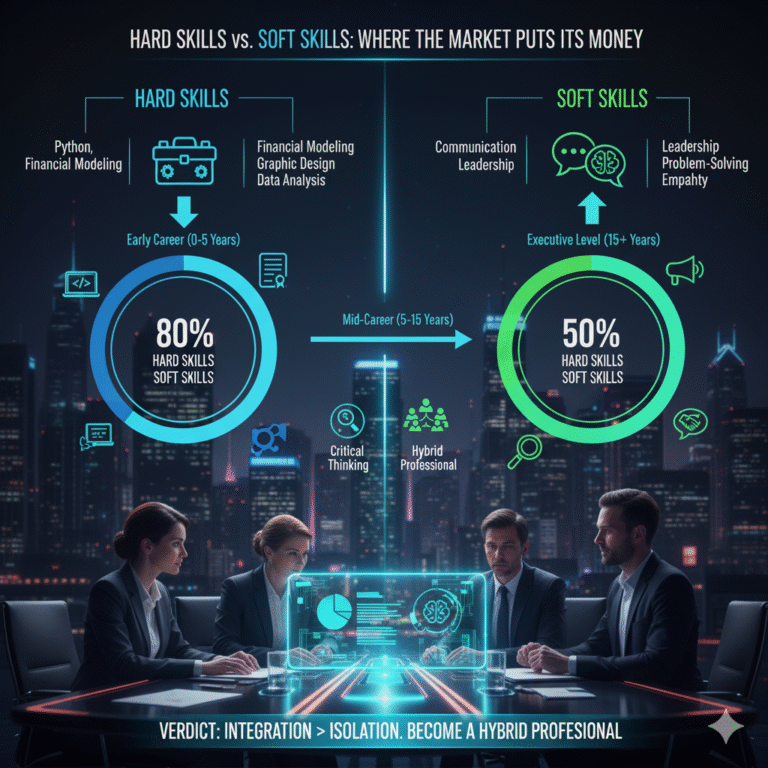Burnout Is Not a Status Symbol: How to Identify the Early Signs and Regain Control
In our hyper-productive society, exhaustion has somehow become a bizarre badge of honor. We brag about working late, surviving on caffeine, and running on empty. The “hustle culture” has so deeply permeated the professional world that being perpetually busy is often mistaken for being valuable. We treat Burnout as a rite of passage, a sign that we are truly dedicated.
Let’s be unequivocally clear: Burnout is not a status symbol. It is a dangerous and debilitating state of physical, emotional, and mental exhaustion. It’s not just “a bad week” or feeling tired; it is a chronic condition, officially recognized by the World Health Organization (WHO) as an “occupational phenomenon” resulting from chronic workplace stress that has not been successfully managed.
The real danger of Burnout is its insidious nature. It doesn’t arrive like a sudden storm; it seeps in slowly, degrading your performance, health, and passion over time. The key is to recognize the subtle, early warnings before you reach a full-scale collapse. This guide will help you identify those signs and provide a strategic framework to regain control.
What ‘Burnout’ Actually Is (And What It Isn’t)
It’s crucial to differentiate Burnout from stress. Stress is a normal, short-term response to pressure. We feel stressed before a big deadline, but we feel relief when it’s over. Burnout is what happens when that stress becomes chronic, and the relief never comes. It’s a state of depletion where you no longer have the resources to cope.
The WHO defines it by three specific dimensions:
- Feelings of energy depletion or exhaustion: A deep, bone-deep weariness that sleep doesn’t seem to fix.
- Increased mental distance from one’s job, or feelings of negativism or cynicism related to one’s job: Losing all passion and feeling detached.
- Reduced professional efficacy: The feeling that you are no longer effective at your job, no matter how hard you try.
If this sounds familiar, you are not lazy or weak. You are experiencing a recognized occupational hazard.
The Stealthy Approach: Identifying the Early Signs of Burnout
We often ignore the first signs of Burnout, dismissing them as “just part of the job.” Recognizing these whispers before they become screams is the most critical step to regaining control. Look for these subtle shifts in yourself or your colleagues.
1. Chronic Cynicism and Detachment
This is often the first sign. It starts as minor sarcasm about work but slowly evolves into a deep-seated cynicism. You feel disconnected from your team, your clients, and the company’s mission. You used to be passionate about your projects; now you just feel apathy or even dread. This detachment is a psychological defense mechanism against the chronic stress.
2. A Persistent Feeling of Ineffectiveness
You work longer hours, but your to-do list never gets shorter. You feel like you’re spinning your wheels and achieving nothing of value. This “inefficacy” is a core component of Burnout. Despite your efforts, you feel incompetent. This leads to a vicious cycle: you work harder to prove your value, which only deepens your exhaustion and sense of failure.
3. Constant Exhaustion (That Sleep Doesn’t Fix)
This isn’t just “I need a weekend to recharge.” This is a profound, long-term exhaustion. You might get eight hours of sleep but still wake up feeling like you haven’t slept at all. This physical depletion is your body’s signal that your internal resources are completely drained. It can manifest as frequent headaches, digestive issues, or a weakened immune system.
4. The “Productivity Guilt”
This is a particularly cruel symptom. When you are not working, you feel guilty and anxious. You can’t enjoy your time off, watch a movie, or have dinner with family without your mind drifting back to your inbox. This inability to psychologically detach from work means you are *never* truly resting, which accelerates the path to Burnout.
Regaining Control: A Strategic Framework for Recovery
If you recognize these early signs of burnout, the worst thing you can do is “push through it.” You cannot solve an exhaustion problem with more work. You must regain control with a strategic intervention. Burnout is not a status symbol to be worn; it’s a critical system failure that needs to be repaired.
Step 1: The Audit (Acknowledge and Identify)
You cannot fix what you do not acknowledge. Stop and perform an honest audit. Acknowledge that you are on the path to Burnout. Then, identify the *real* sources. Is it the volume of work? A toxic manager? A lack of control over your projects? Unclear expectations? Be specific. Write down the top 3-5 “stressors” that are draining your energy.
Step 2: Create “Hard Stops” and Define Boundaries
Burnout thrives in an environment of ambiguity. You must create firm, non-negotiable boundaries. This is not about “work-life balance”; it’s about “work-life boundaries.”
- Define a “hard stop” time for your workday (e.g., 6 PM). After this time, your laptop is closed, and notifications are off.
- Block “Focus Time” on your calendar for deep work and “Rest Time” for lunch. Defend this time as if it were a critical meeting.
- Practice saying “no” or, more accurately, “not now.” Offer alternatives: “I can’t do this today, but I can add it to my list for next week.”
Step 3: Re-prioritize Energy, Not Just Time
Stop managing your time and start managing your *energy*. Not all tasks are created equal. Some tasks (like creative work) may be high-effort but energizing. Other tasks (like pointless meetings) may be low-effort but incredibly draining. Prioritize your day around your energy levels. Do your high-focus, high-value work when your energy is highest. Protect your energy fiercely.
Step 4: Seek Leverage and Reclaim Agency
Burnout is often a feeling of powerlessness. The antidote is to reclaim your agency. Find leverage.
- Delegate: What tasks can you give to someone else?
- Automate: What repetitive tasks can be automated with software?
- Eliminate: What tasks or meetings can you simply stop doing? (You’d be surprised how many.)
Have an open conversation with your manager. Don’t present it as “I’m burned out and I can’t cope.” Present it as a strategic problem: “I want to deliver high-value results, but my time is being consumed by X and Y. Can we brainstorm a way to restructure this?”
Conclusion: Build a Sustainable Career, Not a Faster Treadmill
A career is a marathon, not a sprint. Burnout is the “injury” that takes you out of the race permanently. The most successful, high-performance professionals are not the ones who work the hardest; they are the ones who work the smartest and longest. They understand that sustainability is the ultimate performance metric.
Stop treating exhaustion as a prerequisite for success. Burnout is not a status symbol. It is a signal to stop, reassess, and build a more resilient, intelligent, and sustainable way of working. Your long-term value depends on it.







